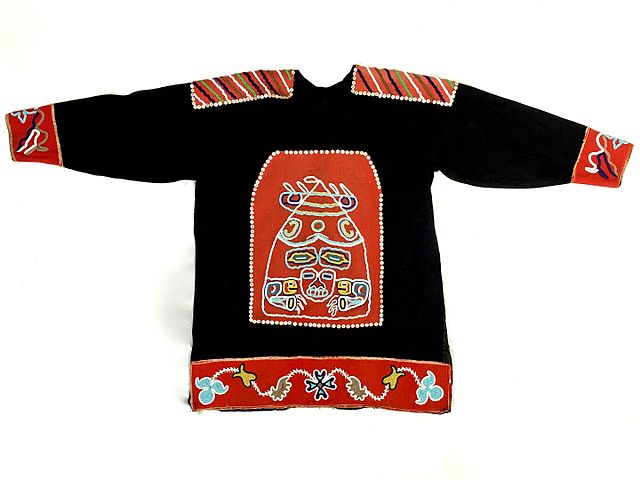Mount Saint Elias, the second-highest mountain in both Canada and the United States, stands on the Yukon and Alaska border about 26 miles (42 km) southwest of Mount Logan, the highest mountain in Canada. The Canadian side of Mount Saint Elias forms part of Kluane National Park and Reserve, while the U.S. side of the mountain is located within Wrangell-St. Elias National Park and Preserve.
Mount St. Elias from Icy Bay, Alaska
Mount Saint Elias from Icy Bay
Mount St Elias from Malaspina Glacier, photograph by Vittorio Sella on the first expedition to climb the mountain, 1897.
Tlingit ceremonial tunic given to Maynard Miller and members of the Harvard Mountaineering Club Mt. St. Elias expedition, 1946
Mount Logan is the highest mountain in Canada and the second-highest peak in North America after Denali. The mountain was named after Sir William Edmond Logan, a Canadian geologist and founder of the Geological Survey of Canada (GSC). Mount Logan is located within Kluane National Park Reserve in southwestern Yukon, less than 40 km (25 mi) north of the Yukon–Alaska border. Mount Logan is the source of the Hubbard and Logan glaciers. Although many shield volcanoes are much larger in size and mass, Mount Logan is believed to have the largest base circumference of any non-volcanic mountain on Earth, including a massif with eleven peaks over 5,000 m (16,000 ft).
Mount Logan from the southeast
Mount Logan from the North East, as seen from Kluane Icefield
A climber on the knife ridge (east ridge)







